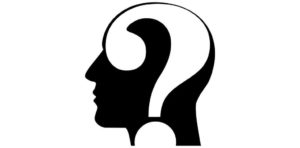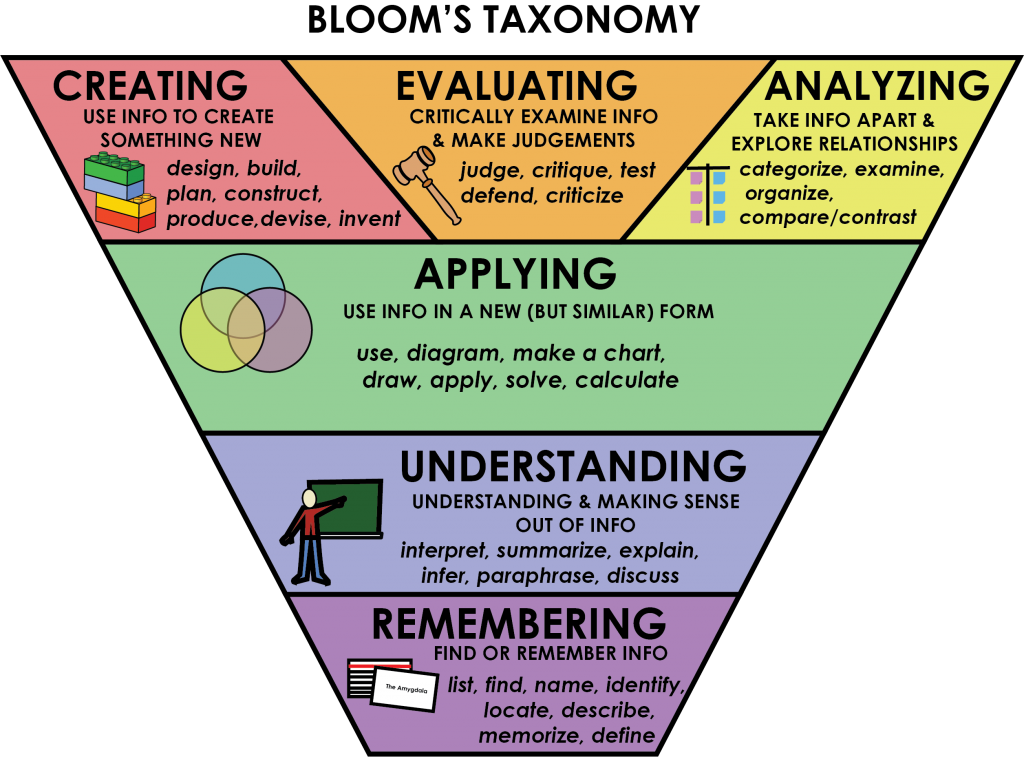Chapter 4 Communication Skills
4.2 Effective Questions

Part of learning is being an active learner. Learning which only involves being fed information is merely surface learning. To really understand, a learner has to be actively engaged in the learning process. That means reviewing, practising, summarizing, and yes, asking effective questions. Asking questions requires thinking about the information and trying to understand it at a deeper level. By forming questions, you will understand things more fully. When you are learning new information or a new process, imagine that you are having to describe it to someone else. What parts of the information or process aren’t entirely clear to you? These are the things to ask questions about.
Remembering the 5 Ws and H is a good place to start. If you have a handle on these then you’ll be on your way to understanding the important information. If you aren’t familiar with the 5 Ws and H, then it’s time to add it to your repertoire: Who, What, When, Where, Why, and How!
- Who – Who was involved? Who does it affect? Who is it addressed to?
- What – What is involved? What happened? What needs to happen?
- When – When did it happen? When will I need to do something about it?
- Where – Where did it occur? Where will it take place?
- Why – Why is it happening? Is there a reason?
- How – How should it be dealt with?
Start using this in your everyday life. Whenever you send out any kind of communication, it’s a great tool to make sure you haven’t left out any information. For example, it’s common that just after the invites for a party are sent out, the host realizes they left off a critical piece of information such as the date. Those who get in the habit of checking the 5 Ws and H rarely make this critical mistake. In the party invitation, if the host makes sure to include them all then the pertinent info is covered:
- Who – Who is invited? Who is the party for?
- What – What is it? – It’s a birthday party.
- When- Give the date.
- Where – Give the address.
- Why – it’s a birthday!
- How – Bring an appy, bring an expensive gift, don’t be late – it’s a surprise.
When you make a habit of using them, you’ll notice you start thinking about them in class as well. You’ll think about them when you’re reading your texts and research articles, and you’ll naturally start to have a questioning mind. Asking effective questions leads to further clarification and greater understanding. Asking effective questions helps you to analyze and think critically. These are important processes in learning.
Exercise: Effective Questioning Using 5 Ws and H
Effective Questioning Using Bloom’s Taxonomy
Self-testing is one of the most powerful study strategies. Creating good questions requires you to think critically about what you need to learn (planning). Testing whether you can answer questions without referring to a text or notes, as you would in an exam, allows you to effectively monitor your progress. The trick to effective self-testing is asking the right questions.
One way of picturing these levels of depth in learning is Bloom’s Taxonomy. In high school level courses, you are usually asked questions from near the bottom of Bloom’s Taxonomy scale, while at college or university, you are required to move beyond recalling basic facts and details, and must learn to apply and analyze material in depth moving to the higher levels on Bloom’s scale. The categories in the cognitive taxonomy developed by Bloom (from lowest to highest) include:
- Remember (knowledge recall) – retrieving relevant knowledge from long-term memory
- Understand (comprehension) – interpreting the meaning of information; being able to “translate” knowledge into one’s own words; linking new information to what you already know
- Apply – using what you know to do required tasks
- Analyze – taking things apart; dissecting; asking “why?”; seeing relationships and how things work
- Evaluate – appraising, judging and critiquing the outcomes of any of the other levels
- Create (synthesis) – putting things together; building on what you know to create something new; seeing new relationships or making new connections. [1] [2]

One method for creating study questions or planning active learning activities is to move step-by-step through each level of Bloom’s Taxonomy. Begin with a few questions at the Remembering level. If you don’t yet know the technical language of the subject and what it means, it will be difficult for you to apply, evaluate, analyze, or be creative. Then, go deeper into your subject as you move through the levels.
Exercise: Create Study Questions Using Bloom’s Cognitive Taxonomy
Download the Bloom’s Taxonomy Printable Worksheet [PDF] to complete this activity or use the table below.
Pick a subject area in which you are working. For each level of Bloom’s Taxonomy on this page:
- Develop a question and answer it to show that you can think about the material at that level.
- Then, working with a partner and using the chart below, explain the questions at each level of Bloom’s taxonomy for this subject area to a partner and listen to them do the same.
- Discuss how your questions would allow you to assess how much you know and what level you are working at.
| Level | Question |
|---|---|
| Remembering | Remembering and recalling information
My question(s): |
| Understanding | Understanding and explaining ideas or concepts
My question(s): |
| Applying | Applying information in a familiar situation
My question(s): |
| Analyzing | Analyzing by breaking information into parts to explore relationships
My question(s): |
| Evaluating | Justifying a decision or course of action
My question(s): |
| Creating | Generating new ideas, products, or ways of viewing things
My question(s): |
You will notice that depending on the content and level of the course, the kinds of questions that are relevant and the complexity of the questions will differ. At any rate, it is a mark of an active learner to be questioning material, and to ask questions when needed.
Now that’s a good question…
Are you shy about asking questions? Do you think that others in the class will ridicule you for asking a dumb question? Students sometimes feel this way because they have never been taught how to ask questions. Practise these steps, and soon you will be on your way to customizing each course to meet your needs and letting the instructor know you value the course.
- Be prepared. Doing your assignments for a class or lecture will give you a good idea about the areas you are having trouble with, and will help you frame some questions ahead of time.
- Position yourself for success. Sit near the front of the class. It will be easier for you to make eye contact with the instructor as you ask the question. Also, you won’t be intimidated by a class full of heads turning to stare at you as you ask your question.
- Don’t wait. Ask your questions as soon as the instructor has finished a thought. Being one of the first students to ask a question also will ensure that your question is given the time it deserves and won’t be cut short by the end of class.
- In a lecture class, write your questions down. Make sure you jot your questions down as they occur to you. Some may be answered in the course of the lecture, but if the instructor asks you to hold your questions until the end of class, you’ll be glad you have a list of the items you need the instructor to clarify or expand on.
- Ask specific questions. “I don’t understand” is a statement, not a question. Give the instructor guidance about what you are having trouble with. “Can you clarify the use of the formula for determining velocity?” is a better way of asking for help. If you ask your question at the end of class, give the instructor some context for your question by referring to the part of the lecture that triggered the question. For example, “Professor, you said the Union troops were emboldened by Lincoln’s leadership. Was this throughout the Civil War, or only after Gettysburg?”
- Don’t ask questions for the sake of asking questions. If your question is not thought out, or if it appears that you are asking the question to try to look smart, instructors will see right through you!
Text Attributions
- “Effective Questioning Using Blooms Taxonomy” and “Exercise: Create Study Questions Using Bloom’s Cognitive Taxonomy” were adapted from Use Effective Questioning Strategies in University 101: Study, Strategize and Succeed by Kwantlen Polytechnic University. Adapted by Mary Shier. CC BY SA.
- “Now That’s a Good Question” was adapted from “Are You Really Listening?” in University Success by N. Mahoney, B. Klassen, and M. D’Eon. Adapted by Mary Shier. CC BY-NC-SA.
Media Attributions
- Question mark head is licensed under a Public Domain license
- Bloom’s Taxonomy © Rawia Inaim is licensed under a CC BY-SA (Attribution ShareAlike) license
- Anderson, L. W., & Krathwohl, D. (Eds.). (2001). A taxonomy for learning, teaching, and assessing: A revision of Bloom's taxonomy of educational objectives. New York: Longman. ↵
- Bloom, B., Englehart, M. Furst, E., Hill, W., & Krathwohl, D. (1956). Taxonomy of educational objectives: The classification of educational goals. Handbook I: Cognitive domain. New York, Toronto: Longmans, Green. ↵

